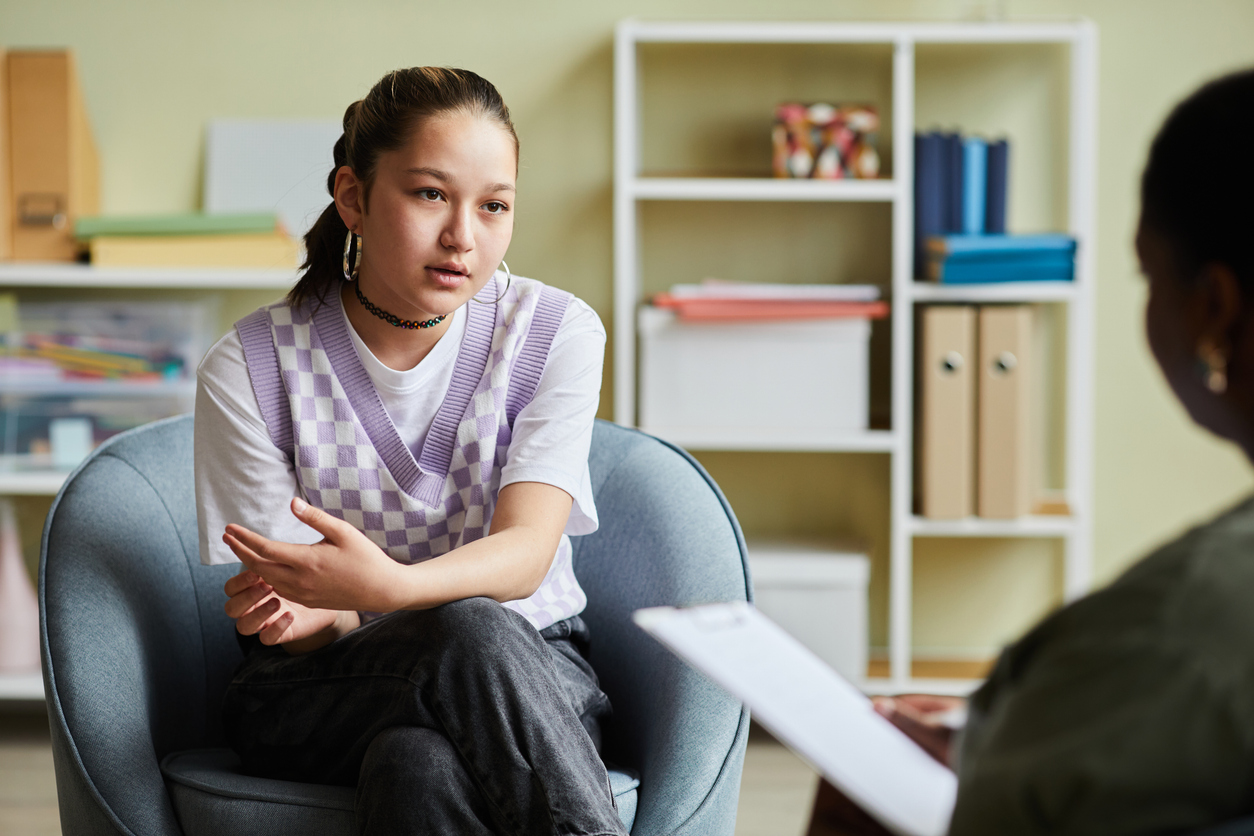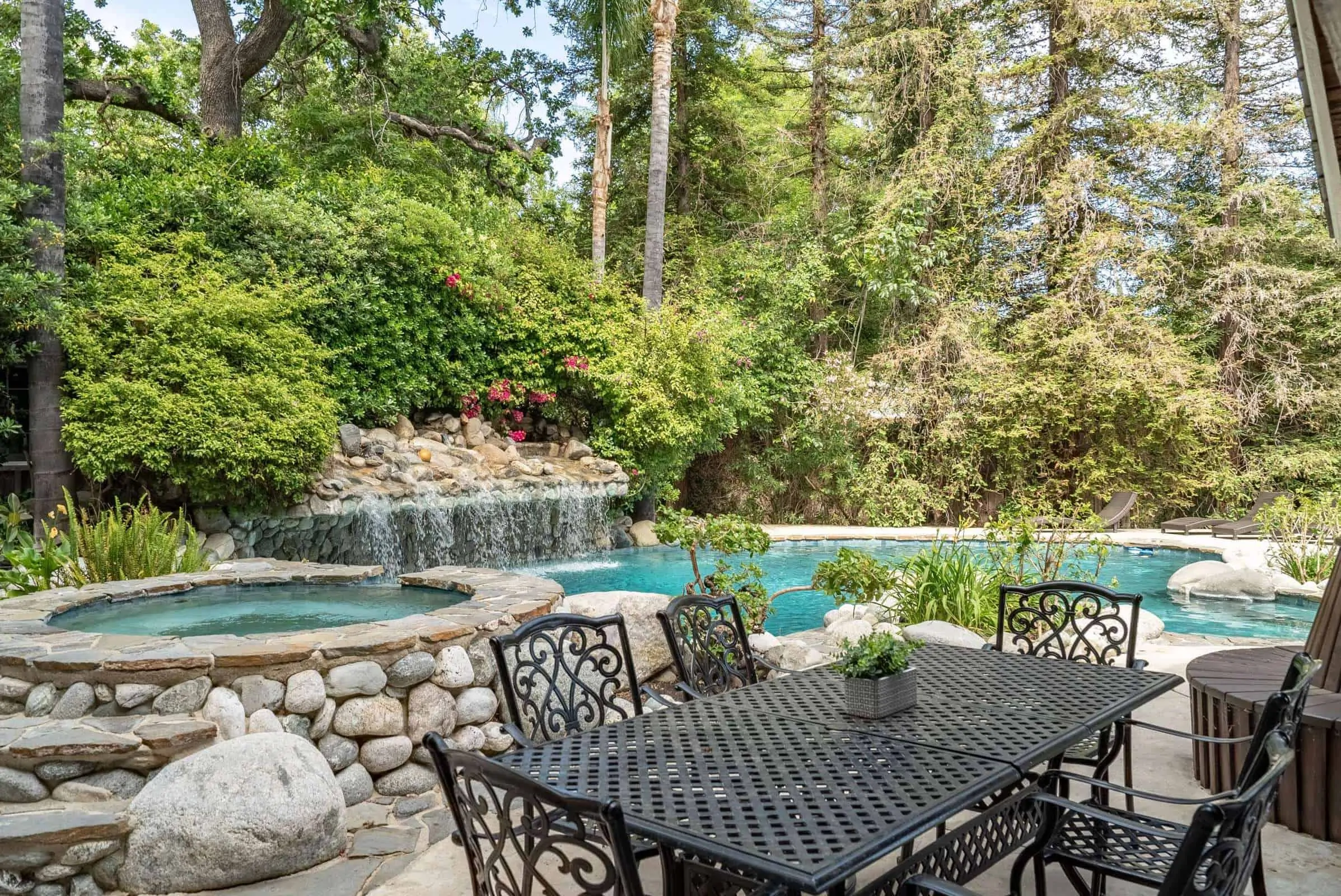Treatment for PTSD and Addiction Dual Diagnosis
Effective treatment for teens with a dual diagnosis of PTSD and addiction requires a comprehensive approach that addresses both conditions in tandem. To effectively treat PTSD, it is essential to integrate therapies that target both trauma and substance use disorders for the best outcomes.
Visions Adolescent Treatment Centers, we tailor our therapies to suit the individual needs of each teen, offering a combination of personal, group, and family therapy sessions complemented by psychiatric care. Our treatment methodology blends evidence-based practices, such as Cognitive Behavioral Therapy, specifically designed to address PTSD, drug addiction, and drug and alcohol abuse issues, with holistic treatments like art therapy to support a thorough recovery process.
Our focus is on each adolescent’s distinct needs and challenges, creating a supportive and healing environment that fosters growth and long-term wellness.
Initial Evaluation & Treatment Plan
The treatment journey for teens with PTSD and addiction begins with an in-depth evaluation, recognizing that these conditions often co-occur and must be assessed simultaneously.
This process involves understanding the teen’s unique experiences with trauma and substance abuse, their mental health history, and any underlying factors contributing to their conditions. The evaluation includes clinical assessments, interviews with the teen and their family, and, if necessary, psychological testing. Based on this comprehensive assessment, a personalized treatment plan is formulated, aiming to address both PTSD and addiction concurrently.
The plan typically outlines specific therapies and medication management, setting measurable goals tailored to the teen’s needs, and ensuring a focused and practical approach to treatment.
Supplementary Education
Educational support plays a crucial role in the treatment of teens with PTSD and addiction.
This aspect of treatment involves teaching teens about the nature and effects of their conditions on both the brain and behavior. It includes detailed information on how trauma impacts mental health and how addiction develops as a coping mechanism. Teens are educated about healthy coping strategies, the importance of self-care, and the recovery process.
Additionally, education on relapse prevention is provided, equipping them with the knowledge and tools to identify and manage potential triggers in the future. This educational component empowers teens, helping them understand their conditions and actively participate in their recovery journey.
Therapy
Therapy is the cornerstone of treatment for teens with PTSD and addiction.
A combination of cognitive-behavioral therapy (CBT) and trauma-informed therapy is often employed. CBT helps in modifying negative thought patterns and behaviors associated with both PTSD and addiction. Trauma-informed therapy addresses the specific trauma at the heart of PTSD, helping teens process and healthily manage their traumatic experiences.
Family therapy is another vital component, as it improves communication, resolves conflicts, and strengthens family dynamics, creating a supportive home environment. These therapeutic approaches are tailored to the teen’s needs, ensuring they receive the most effective treatment for their situation.
Nutritional Support
Nutrition is a fundamental aspect of the recovery process for teens with PTSD and addiction.
A well-balanced diet is crucial in restoring physical health, which is often compromised due to substance abuse and stress associated with PTSD. Nutritional support involves providing a diet rich in essential nutrients, vitamins, and minerals that aid in the repair and rejuvenation of the body. Registered dietitians can assess a teen’s nutritional needs and develop a personalized diet plan to enhance their overall well-being.
In some cases, specific nutritional supplements might be recommended to address deficiencies or support brain health, further enhancing the effectiveness of the overall treatment program.
Holistic Approaches
Holistic treatments are an integral part of the treatment strategy for teens dealing with PTSD and addiction. Approaches like yoga and meditation offer therapeutic benefits by reducing stress, enhancing mindfulness, and improving emotional regulation. These practices can be particularly effective in helping teens develop coping skills to manage PTSD symptoms and cravings related to addiction.
Art therapy is another key holistic approach, offering a creative outlet for self-expression and emotional exploration. Engaging in these activities provides a constructive way to process emotions and trauma, complementing the more traditional therapies and contributing to a well-rounded, holistic recovery experience.
Medication Management
Medication can play a crucial role in the treatment of teens with PTSD and addiction.
For PTSD, medications such as antidepressants can help manage symptoms like anxiety, depression, and sleep disturbances. In addiction treatment, medications may be used to alleviate withdrawal symptoms, reduce cravings, or treat co-occurring mental health disorders. Effective medication management is crucial, involving the careful selection, dosing, and monitoring of medication use to ensure both safety and efficacy. This process is overseen by healthcare professionals, who work closely with the teen to monitor their response to the medication and make adjustments as needed.
The goal is to use medication as a supportive tool in a broader, comprehensive treatment plan.
Support
Ongoing support is a cornerstone in the recovery journey for teens battling PTSD and addiction.
This support network, encompassing therapists, peers, and family members, plays a vital role in the teen’s path to recovery. Therapists provide ongoing guidance and professional insights, helping teens navigate the challenges associated with their dual diagnosis. Peer support, often in group therapy or support groups, provides a sense of community and understanding from others facing similar struggles.
Family support is equally crucial, as a nurturing and understanding home environment significantly contributes to the teen’s resilience and ability to cope. This multi-faceted support system offers a blend of empathy, encouragement, and accountability, essential for long-term recovery and success.
Aftercare Planning
Aftercare planning is a critical component of the treatment process for teens with PTSD and addiction. After completing the initial treatment program, the focus shifts to ensuring sustained recovery and overall well-being. An effective aftercare plan typically includes strategies for relapse prevention, such as identifying triggers and developing coping mechanisms to deal with potential challenges.
It also encompasses ongoing support resources, such as continued therapy sessions, support group meetings, and regular check-ins with counselors or mentors. The aim is to provide the teen with a structured, supportive framework that they can rely on as they transition back into daily life, helping to maintain the progress made during treatment and prevent relapse.







